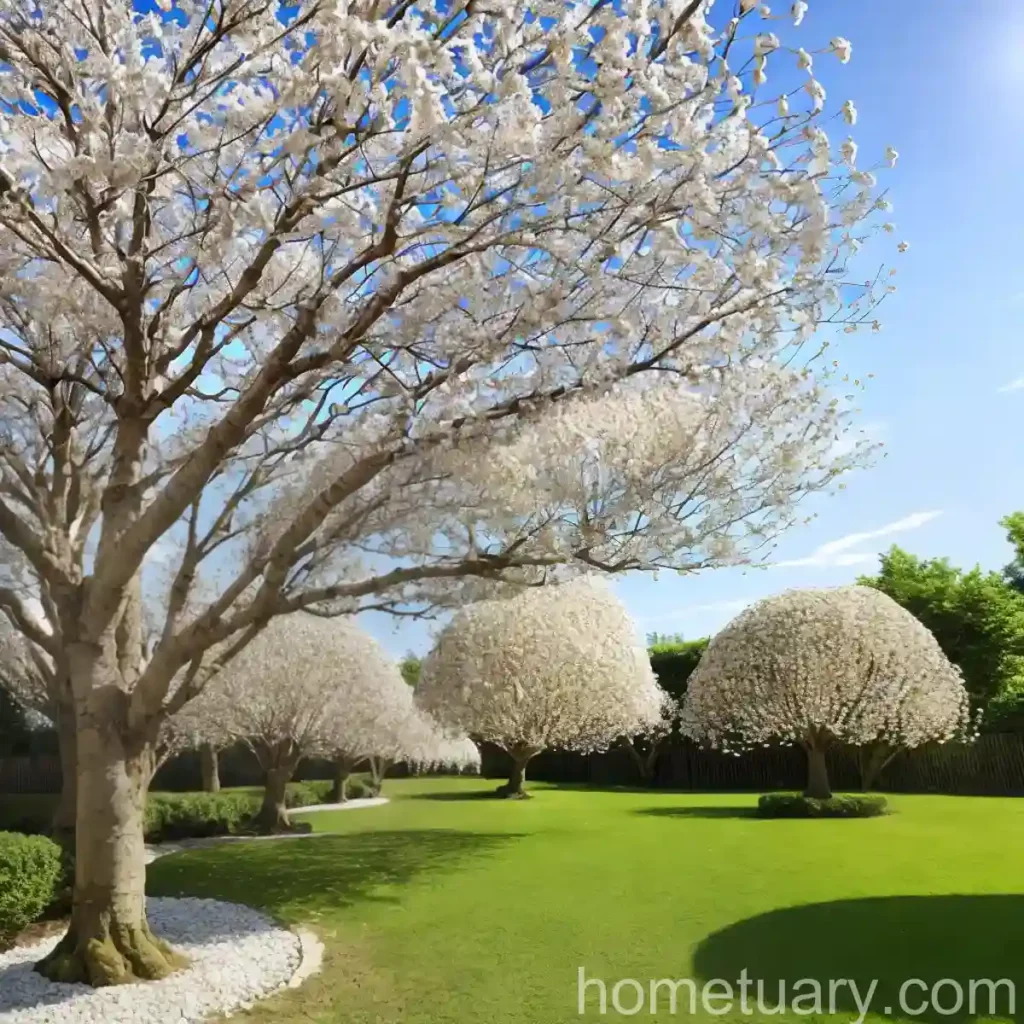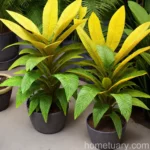The Enigmatic Attraction of the Dove Tree (Davidia involucrata)
Introduction
The world of plants is filled with remarkable species that captivate the imagination and draw the eye with their unique features. Among these, the dove tree (Davidia involucrata) stands out as an extraordinary species that boasts an intriguing cultural history, remarkable ecological significance, and stunning ornamental value. In this comprehensive guide, we will delve into the various aspects of the dove tree, from its cultural uses to its growth requirements and maintenance tips. Along the journey, we will unveil the enchanting characteristics and the enigmatic allure of this remarkable plant.
What is the Dove Tree (Davidia involucrata)?
The dove tree, also commonly known as the handkerchief tree, is a deciduous tree native to the woodlands of Central China. It belongs to the family Cornaceae and is renowned for its distinctive feature – the ornamental flower clusters that bear a striking resemblance to delicate, fluttering doves or handkerchiefs, hence the popular name. The scientific name, Davidia involucrata, honors Father Armand David, the French missionary and botanist who first discovered the tree in China in the 1860s.
This magnificent tree is beloved for its elegant beauty and has found use in both cultural traditions and modern horticulture. Its exquisite appearance, with large, white bracts surrounding tiny flowers, makes it a sought-after addition to gardens and landscapes, while its medicinal uses and folklore add to its mystique.
Key Takeaways on Dove Tree (Davidia involucrata)
Here are some key takeaways that will guide us through our exploration of the dove tree:
- Dove Tree Facts: Discover interesting facts and trivia about this captivating species.
- Davidia involucrata Information: Learn about the taxonomy, origin, and history of the dove tree.
- Dove Tree Care Tips: Understand the essential requirements for successfully cultivating the dove tree.
- Growing Davidia involucrata: Explore the optimal conditions for fostering the growth of this remarkable tree.
- Dove Tree Characteristics: Delve into the unique features and physical attributes of the dove tree.
- Davidia involucrata Features: Uncover the distinctive traits and defining characteristics of this ornamental tree.
- Dove Tree Planting Guide: Gain insights into the best practices for planting and establishing the dove tree.
- Davidia involucrata Propagation: Learn about the methods and techniques for propagating the dove tree.
- Dove Tree Flowering Season: Explore the timing and duration of the tree’s breathtaking floral displays.
- Davidia involucrata Varieties: Discover the different cultivated varieties and cultivars of the dove tree.
Now, let’s embark on our journey into the captivating world of the dove tree!
Culture
Uses
The dove tree has a rich cultural and historical significance, rooted in both its native habitats and the broader contexts of horticultural and botanical traditions.
Historical Significance
In its native region of Central China, the dove tree has been revered for centuries and holds a significant place in traditional folklore and customs. The unique floral display of the tree has led to various symbolic and ceremonial uses, and it is often associated with purity, peace, and the supernatural.
In Western cultures, the dove tree is celebrated for its exceptional aesthetic appeal and has been cultivated in botanical gardens and ornamental landscapes for its picturesque blooms. Its historical significance, coupled with its striking appearance, has made it a sought-after tree in cultural, horticultural, and landscaping contexts.
Water
The dove tree thrives in moist, well-drained soils and benefits from regular watering, especially during dry periods. Adequate soil moisture is essential for the healthy growth and development of the tree, particularly during the initial establishment phase. However, excessive water accumulation should be avoided to prevent waterlogging, which can lead to root rot and other detrimental conditions.
Sunlight
The dove tree prefers partial shade to full sun, making it adaptable to a range of light conditions. In its native habitat, the tree is often found in the understory of woodlands, where it receives dappled sunlight. When cultivated in gardens or landscapes, providing a location with filtered sunlight or partial shade can help ensure optimal growth and flowering.
Fertilizer
When it comes to fertilizer applications, a balanced, slow-release fertilizer can support the overall health and vigor of the dove tree. Applying a suitable fertilizer in the early spring, before the onset of new growth, can provide essential nutrients for the upcoming growing season. It is important to follow recommended application rates and avoid over-fertilization, which can lead to excessive vegetative growth at the expense of flowering.
Soil
The dove tree thrives in well-drained, loamy soils with a slightly acidic to neutral pH. It is important to ensure good soil structure and fertility to support the tree’s growth and development. Amending the soil with organic matter, such as compost or well-rotted manure, can further improve soil quality and provide a conducive environment for the dove tree.
Pruning
Pruning is essential for maintaining the health, shape, and appearance of the dove tree. Proper pruning practices, such as the removal of dead or damaged branches, can promote overall vigor and encourage robust flowering. Additionally, shaping the tree through selective pruning can enhance its ornamental value and ensure a balanced and attractive growth habit.
Propagation
Container
The dove tree can be successfully grown in containers, making it a versatile choice for landscapes, patios, and smaller gardens. When cultivating the tree in containers, it is important to select a well-draining potting mix and provide adequate space for root development. Regular watering and proper container maintenance are essential for supporting the growth of the tree in a container environment.
Popularity
The dove tree has gained popularity among gardeners, horticulturists, and landscaping enthusiasts for its exceptional beauty and ornamental value. Its unique floral display, coupled with its cultural significance and historical allure, has contributed to its widespread popularity in both native regions and international horticultural contexts.
Common Diseases
Disease Diagnosis
The dove tree is generally resilient to most common diseases; however, it may be susceptible to certain fungal infections and foliar diseases under unfavorable growing conditions. Routine inspection of the tree for signs of discoloration, lesions, or abnormal growth can aid in early disease diagnosis and prompt treatment, if necessary.
Common Pests
Despite its hardiness, the dove tree may encounter occasional pest infestations, including aphids, scale insects, and caterpillars. Monitoring the tree for signs of pest activity and implementing appropriate pest management practices, such as the use of horticultural oils or insecticidal soaps, can help mitigate potential pest-related issues.
Botanist’s Tips
Fun Facts
- The dove tree is a living fossil with a long evolutionary history, dating back millions of years. Its distinct floral structures have intrigued botanists and naturalists for generations.
- In its native habitats, the dove tree is known to attract various pollinators, including bees and butterflies, with its abundant nectar and visually striking flowers.
- The tree’s wood has been traditionally used in crafting and woodworking applications, valued for its durable and fine-grained qualities.
Links to External Resources
To further explore the captivating world of the dove tree and expand your knowledge, you may find the following resources invaluable:
- Royal Horticultural Society: Dove Tree – Davidia involucrata
- Missouri Botanical Garden: Davidia involucrata
- North Carolina State University: Dove Tree – The Handkerchief Tree
- The Morton Arboretum: Dove Tree
In conclusion, the dove tree (Davidia involucrata) stands as an emblem of natural beauty, cultural significance, and botanical wonder. With its graceful form, ethereal blossoms, and intriguing history, this remarkable tree continues to captivate and inspire plant enthusiasts, cultural historians, and nature lovers around the world. May the allure of the dove tree continue to flourish, enriching landscapes and hearts with its timeless charm and enigmatic grace.















